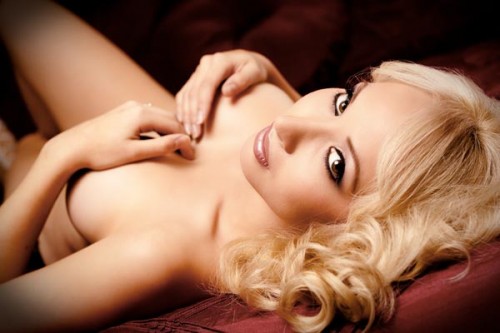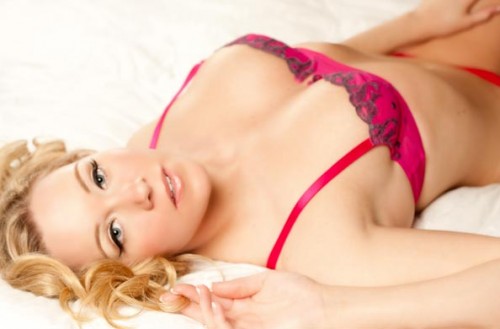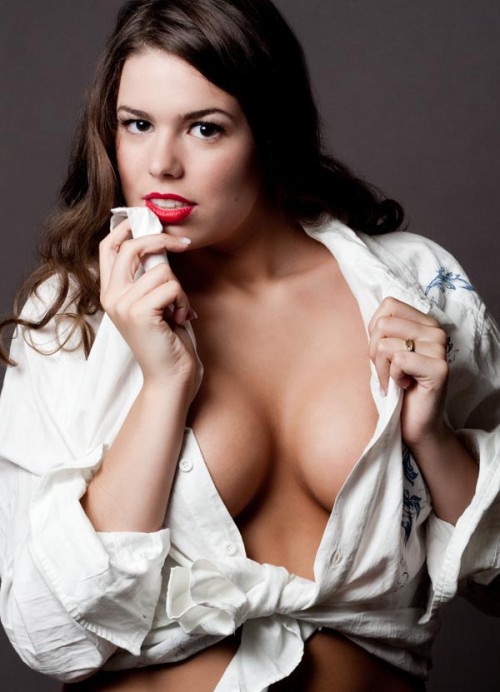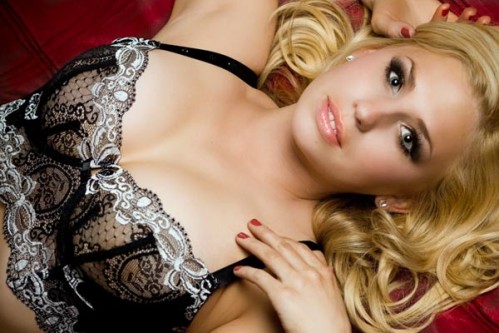This is a guest post by Ed Verosky.
Boudoir is a popular genre of portraiture that many wedding and family photographers are adding to their repertoire. If you've been thinking about offering this service to your clients, this article should provide a few tips to help you get started. For more, please see my eBook, 10 Ways to Improve Your Boudoir Photography Now.
1) Understand Your Client's Fears and Motivations.
Reasons for wanting to do a set of boudoir pictures vary from client to client. The most common ones include wedding or anniversary gift albums, birthday gifts, or Valentine's Day gifts. Some clients, feeling that they are reaching a turning point in their lives will decide that they would like to mark it with beautiful photographs of themselves. Still others who are thinking of starting a family, simply wish to capture the look of their pre-baby body before it changes. Whatever your client's reasons or motivations, they are important enough for her to hire a professional to get the job done right.
Posing for the camera isn't easy for most people. But for many women, the thought of attempting sexy poses in front of a stranger, while wearing revealing outfits and lingerie, is quite intimidating. The fact that she has booked a session with you, despite her particular level of anxiety about doing a boudoir shoot is evidence of her strong desire for a great set of pictures. But she still needs to know that you understand her worries about how she'll look in her pictures, and that you will make sure she looks her best. Doing a boudoir shoot is definitely outside the comfort zone of most clients, so be sure to offer her a high degree of sensitivity and understanding.
2) Prepare For A Successful Shoot.
We send our clients some basic information and tips that help them prepare for their boudoir shoots. This is a good way for them get some sense about what to do prior to their shoots, and how the whole process works with your studio.
We send out a PDF (Adobe Portable Document Format) file containing our tip sheets. “Boudoir Pre-Session Tips & Info,” includes tips for hair and makeup preparation as well as advice about allowing enough time to make it to the session without feeling rushed. Our “Boudoir Session Photo Ideas” sheet has a checklist of boudoir styles and keywords to help the client decide on, and communicate, the type images she'd like to create. Does she want to be depicted as playful or dramatic, coy or bold? Is she more interested in over-the-top glamour with frills and high-heels, or more casual looks like wearing a man's shirt and little else?
It's also a good idea to let her know how much time she needs to set aside for the shoot, how many outfits to bring, and how and when she should expect to see the proofs.
3) Set Limits For The Best Results.
Everything from makeup and styling, to the number of outfits your client will want to attempt to shoot, all have a direct impact on how much you can expect to accomplish during the actual photography. Keep in mind that most clients don't have the practice or performing stamina to go for several hours in front of the camera. Even with frequent breaks for changes, styling touch-ups, and waiting on the photographer between setups, the shoot time will eventually take its toll on your subject.
Most women will be okay with a shoot lasting up to two and a half hours, with some crashing around the 45-minute mark. About four outfit changes is a realistic limit. With each outfit, you should get enough poses and perspectives to have a nice variety of shots. As for hair and makeup, I try to have my clients come with that already done and just a few items for touch-ups. At the very least, have their hair and makeup applied in an area of your studio other than the actual shooting set. After a couple of hours getting ready for the camera, it's a good idea to give the client a little change of scenery for the shoot. Setting limits on actual shoot time, makeup and hair styling, and outfits will help make the experience more enjoyable for your client, and more productive for you.
4) Direct Your Subject With Confidence.
You should make sure you give your client plenty of feedback and encouragement during the shoot. She needs to know where she stands with you at all times. Your silence while shooting will only make room in her head for questions about her pose, expression, and whether or not she�s doing a good job in front of the camera. Letting her know what to do and how well she�s doing it, will help make her a better and happier subject.
Encouragement starts the moment she arrives for the shoot. Tell her that she looks great, and that you know the photos will turn out wonderfully. During the shoot you have to be her cheerleader of sorts; tell her how great she's doing every so often.
Understand that she is looking to you for direction. You might be focused and concentrating on a series of shots that look just great from your perspective, but without letting her know what you're doing, she'll be lost. She'll wonder if she's supposed to be smiling or not, or where her hands should be placed, or which direction she's supposed to be looking in. So, give her confidence by giving her solid direction throughout. If there are times that you just need her to keep doing what she's doing while you get some different angles, just tell her so. It will go a long way in keeping her relaxed, engaged, and confident. How well you manage this will show in the final shots.
5) Use Simple, But Effective Lighting Techniques.
Finally, make sure you have a simple lighting setup to work with. Your boudoir client is picking up cues about your competence from how you use and adjust your camera and lighting. A simple lighting setup that you are completely familiar with will allow you to focus more of your attention on her and less on your gear and settings.
I use a two-light setup in several configurations that I'm very comfortable with. I use manual settings on my camera, and they're almost always the same. And I rarely use more than one lens throughout the shoot. Changing lenses and making too many adjustments to the lighting and camera settings would just waste too much time. If you'd like a detailed description of my lighting and camera setup, you'll find it it my eBook, 10 Ways to Improve Your Boudoir Photography Now.
Ed Verosky is a photographer and author based in New York City. Look for his photography eBooks at his website, About-Photography.com.











3 Comments
The tips on prep time was helpful. Thanks, kj
Hi
I have shot numerous professional and amateur models in Studio settings. What I have discovered is Less Is More! It is really difficult to execute a great nude shot – nobody has a perfect body, lighting is difficult etc. It is better to cover up, reveal a bit and leave the rest to the imagination!
Here is a an example:
Red or Black II: https://t.co/8KrlvK5
This was a helpful article! Thanks for taking the time to share your knowledge with us:)